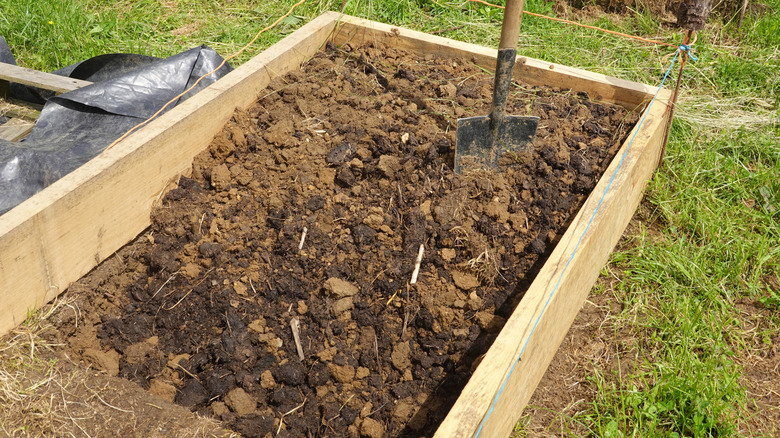The Soil Mistake That's Causing Your Raised Garden Beds To Fail
You've built them, filled them with soil, and chosen the best plants for your zone to grow in your raised beds. Even after careful watering and fertilizing, why are your plants not thriving after you've put in so much work? It could come down to your soil. All dirt isn't made the same, and even carefully-sourced potting soil or compost won't cut it if that's all you've used to fill the beds. The wrong type of soil is one of the raised garden mistakes many people make, but it's possible to remedy the situation without digging out the entire contents of each bed.
Smart mixing is key to nutrient-rich soil. This is, of course, easier to do if you're just starting a raised bed garden. But it's not impossible to enrich your existing growing medium. Over time, potting soil can get too dry, while compost can get too wet. Therefore, a combination of soil, compost, and an additive like sand or vermiculite to facilitate drainage is the best route to go. You can purchase bags of soil mix created specifically for raised beds, but it's much cheaper to mix up your own combination, especially if you have more than one bed to fill or amend.
Fix your soil mix
So you've discovered that your raised beds contain too much of one ingredient and not enough — if any — of other ones that are essential for good growing. Yup, you will have to remove some of your soil unless the level in your bed is low enough. Old Farmer's Almanac recommends a ratio of 40% soil, 40% compost, and 20% coarse sand or perlite.
If your beds are stocked with 100% soil or compost, you'll need to scoop some out to make room for other materials. Grab a shovel and a large plastic storage tub with a lid. You'll be removing 60% of the material, and measuring that amount will be a challenge. One possibility is to smooth the soil surface in the bed, and measure how deep the soil is. As you remove soil, smooth it and measure periodically to see when you've removed 60% of the former depth. Shovel the soil into the plastic tub and cover it; this storage tub hack will help save your investment for later.
Backfill the bed with compost until the level is about 20% beneath its former full line, and finish the rest off with coarse sand. Spend some time turning and mixing the soil with a gardening fork for small beds and a shovel or hoe for larger beds. Continue until the soil looks consistent throughout the bed.

